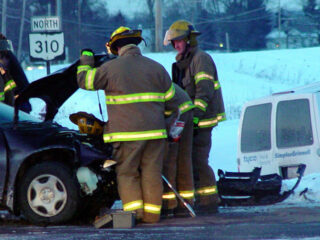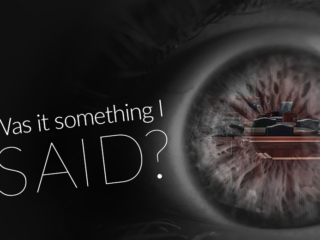This was a motion and cross-motion for summary judgment. The defendant driver sought to have the claim dismissed as against him and his numbered company. The Plaintiff’s insurer sought its release from the action under its unidentified coverage. In the alternative, it sought a ruling that the OPCF 44R was not triggered in the circumstances of this claim.
Released December 23, 2016 | Full decision [CanLII]
A collision occurred between the Plaintiff, Mr. Sobh and the defendant driver, Mr. Middel. Sobh was following Middel. Both drivers were driving at reasonable speeds. Suddenly, an unidentified third party cut Middel off, in response to which he slammed on his brakes. He avoided rear-ending the third party, but was rear-ended in turn by Sobh.
Both parties agreed that the collision had been triggered by the third party driver. Sobh acknowledged that either Middel, or RBC, his own insurer, would bear some responsibility for the collision, but that both could not. They also agreed that the proper test was whether a reasonable jury, properly instructed, would find Middel 1% liable for the collision.
Typically, the rear driver in a rear-end collision bears most or all of the fault, as has been found repeatedly in Ontario courts. RBC provided case law where this will not be the case, including instances where the lead vehicle comes to an unexplained, sudden stop. It further argued that since Middel was in effect also a rear vehicle, he ought to be held to the same standard of care as the Plaintiff.
Finally, it claimed that Middel ought to have anticipated that the unidentified vehicle would behave as it did, and that he should have prepared himself for this eventuality.
Justice Garson disagreed. He stated:
When a vehicle makes a sudden, abrupt, unlawful and unsafe action and swerves in front of another vehicle, it would be unreasonable and an affront to common sense to expect the vehicle that has been cut off to anticipate this action… Simply put, Middel ought to have anticipated that the driver of the unidentified vehicle would operate his vehicle in safety, and in compliance with the rules of the road.
Middel made an appropriate response to this unexpected action. He applied his brakes and avoided the head-on collision facing him. In fact, Sobh acknowledged that there was nothing else Middel might have done.
Justice Garson saw no evidence of negligence against Middel, and stated that a properly instructed jury would not either. He identified that a genuine issue for trial existed, but was satisfied that it was in the interests of justice to use his expanded powers under the Rules to dismiss the action as against Middel.
Regarding the cross-motion by RBC, his Honour held that the finding above was dispositive of the cross-motion in terms of liability coverage.
Justice Garson turned to the issue of how much coverage should be available. In order to trigger the OPCF 44R coverage in an unidentified claim, the claimant’s evidence must be corroborated by other material evidence.
In this case, Justice Garson found that Middel’s evidence constituted “independent witness evidence, other than the evidence of a spouse …or a dependent relative,” and was sufficient to corroborate Sobh’s claim.
As above, Justice Garson relied upon his expanded powers to make a binding determination that the OPCF 44r was triggered in this case.











